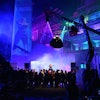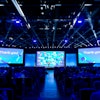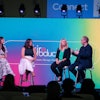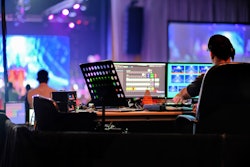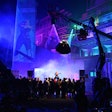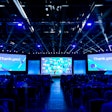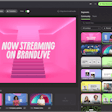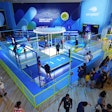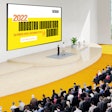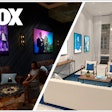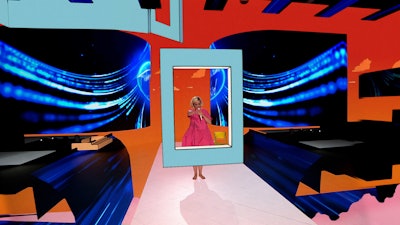
Emerging technology offers astonishing possibilities for the future of virtual events, such as remotely attending music festivals or lavish galas that feel hyperrealistic despite happening thousands of miles away. XR, or extended reality, platforms are offering event creators unprecedented opportunities to bring their most unique event concepts to life through stunning digital experiences. So how can the industry leverage it to develop event concepts that drive up the wow factor for their attendees? Well, the kicker is, even with rapid growth, the coveted event tech comes without a handbook.
To get more insight, BizBash spoke with Nicolas Marullo, president and CEO of Cinco, a Toronto-based company specializing in brand experiences and sponsorship activation. Last year, his team launched xSpace, a customizable virtual platform designed to guide users through journey-driven events and sponsorship activations with a real-life feel.
Does using an XR platform for online events differ from utilizing a gaming platform?
We’ve seen mix-ups with the kinds of virtual experiences we’re creating versus gaming platforms. Virtual events need to be aesthetic and lifelike, but also easy to understand and accessible to anyone who wants to join. In gaming, you may have super realistic 3D graphics that require a headset and potentially a lot of bandwidth and processing power to run. We’ve worked with a number of industries to design experiences with a distinct look and feel, but ultimately the idea is to engage users in a new environment—not to try to replicate real life.  Real life or XR? Believe it or not, this cityscape balcony view was designed in xSpace, proving how realistic of an environment XR can offer.Photo: Courtesy of Cinco
Real life or XR? Believe it or not, this cityscape balcony view was designed in xSpace, proving how realistic of an environment XR can offer.Photo: Courtesy of Cinco
How can event producers ensure they're creating an engaging experience within a virtual environment?
It all comes down to context. For example, if you’ve created a virtual experience at Roger’s Place inside the Edmonton Oilers locker room, everything inside that space should be purpose-driven and add to the fan's excitement. That can mean providing team trivia, giveaway opportunities or ways for fans to interact with each other—in addition to a live feed of the game itself. It’s also ideal to have an online support person available to help people navigate the space, the same way staffers at in-person events would.
What key benefits of XR should brands be leveraging to connect with their audiences virtually?
If you create a really distinct virtual booth, at say, a trade show, you’re in a better position to generate better customer and lead data from the visitors you attract. There are also a lot of opportunities to reimagine how sport and entertainment brands can engage with remote fans—imagine reaching 20,000 people in a stadium, plus another 50,000 joining from around the world. And with technology like 5G, it will be easier for more people to take part in really immersive experiences from wherever they want.
We've noticed XR platforms have become increasingly popular for replicating live music events. Why do you think that is? With the pandemic, it’s been difficult to give performances that allow you to interact with fans in person. Apart from releasing new songs, there hasn’t been much you can do in a live setting. But there are a lot of ways you can use XR in addition to how it’s used for shows—say in creating promotional video content, or really imaginative music videos that show you in an environment that your fans haven’t seen you in before. There are unlimited ways to get creative. Silent Partners Studios, based in Montreal, for example, specializes in designing on-stage entertainment productions. In 2020, they co-developed XR Studios, a mixed-reality platform used to design experiences for last year’s MTV's Video Music Awards and American Idol finale.
Tell us more about what happens behind the scenes when it comes to designing an XR environment.
We typically discuss what elements are going to be included in the scene and then build out the concept for a performance from there. Then it’s a matter of using a 3D engine or video software to design what will virtually happen on the stage where the artist/speaker will be. When it comes to XR, everything is rendered in real time, so everything we design has to be in sync with what the artist/speaker is doing. However, they can also see the virtual environment they’re in, which makes it easier for them to work within that space.
What role will XR play once gathering restrictions start to lift?
It’s not going to replace live shows, but it adds real value to how we can deliver livestreamed or televised experience, or create content developed to get fans excited—all in ways we haven’t been able to up until now.
 Silent Partner Studios also designed this XR environment for last year's MTV's Video Music Awards.Photo: Courtesy of Silent Partner Studios
Silent Partner Studios also designed this XR environment for last year's MTV's Video Music Awards.Photo: Courtesy of Silent Partner Studios
